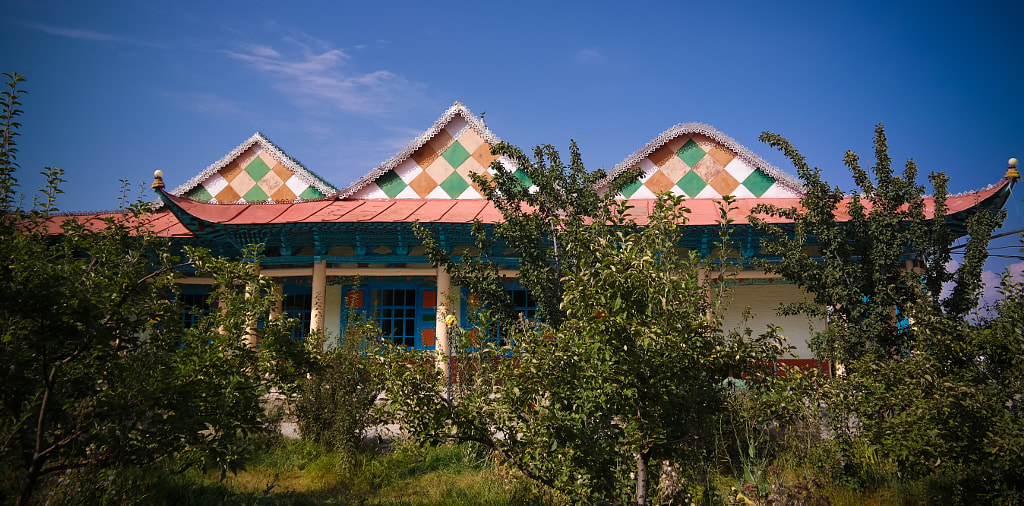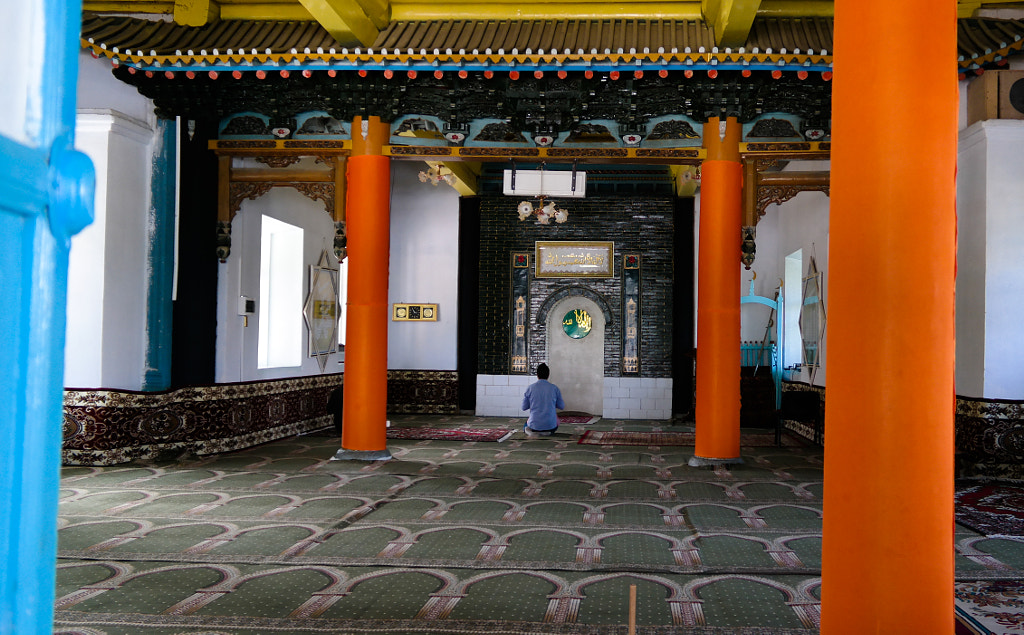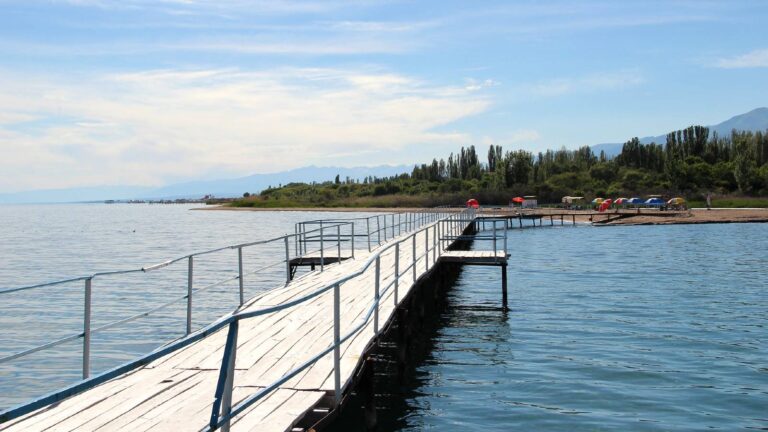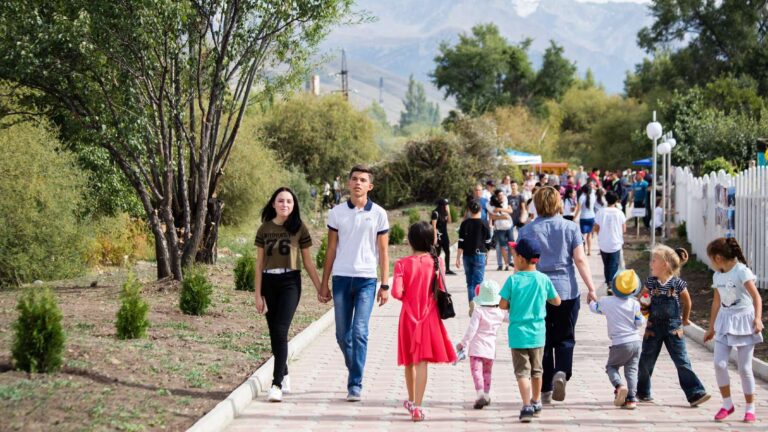Getting There
The Dungan mosque in Karakol is located near the intersection of Abdrakhmanov and Bektenov streets, next to the central square of the city.
What to Expect
The mosque is not so large as other mosques in Central Asia – only 27 meters long and 15 meters wide – in the form of a rectangle with a row of columns along with the eastern and western parts.
The windows are located only on the northern and southern walls. The western wall is empty and clean to make the eyes of the worshipers focus here since according to legend, any mosque should be turned towards the Arab city of Mecca.
The mosque has four pillars located around the perimeter. In turn, these pillars stand on stone bases that support the lower carved part of the building and the roof. Simplicity is behind the apparent complexity of the structure: the structure can be dismantled at any time since the beams are not fixed in any way.
The mosque has three carved roofs, the pediments of which face south with curved corners. At the ends of all four perimeter beams, various types of dragons are depicted with magnificent carvings, which personify good wishes in Chinese culture.
The roof itself is supported by about 30 columns, which are painted in golden yellow, on large dark blue bases. The cornice of the building is decorated with images of grapes, pears, pomegranates and peaches.
History
The history of the Dungan mosque in the city of Karakol begins in the late 19th-early 20th century. As a result of the uprising of 1877, about 300 thousand Dungans, moving through the dangerous passages of Torugart, fled from the punitive detachments of the Chinese.
Many Dungans died in the snow, froze to death, died of hunger, but many of them reached the city of Karakol, where they were warmly received by representatives of the Russian and Kyrgyz peoples. Having settled in the city, the Dungans decided to build a mosque for themselves. Its construction took three years.
The most amazing thing about this mosque is that it was built without a single nail or any metal ties. The builders used only wooden beams from the Tien Shan spruce, elm and local poplar. Walnut was also used in the decoration of the building.
But before construction, it was necessary to prepare all this, therefore, the master of Dungan wooden architecture Zhou-Sy, who at that time was about 40 years old, was invited from Beijing. He worked with 20 craftsmen who came from China.
The foundations and stonework were made by local craftsmen, and all the wooden ones were made by the Chinese. Zhou-Su drew ornaments on the tree, which were immediately carved by his assistants.
Following the project, every detail was thought out, every little thing was foreseen. Parts of the future building were being prepared for about 3 years. Within 3 months, all the details were collected and the building was built. The construction of the mosque was completed on May 10, 1910.






